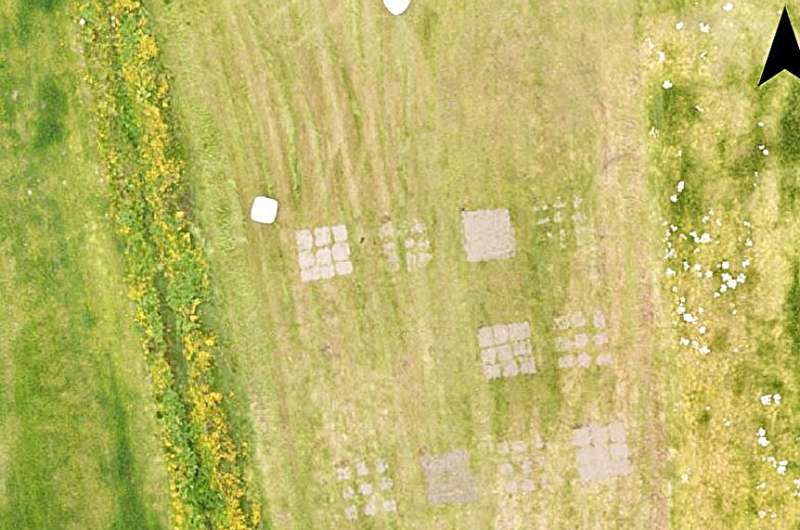Glacial rock flour creates new opportunities for Greenlandic agriculture

New research indicates that the use of glacial rock flour could enhance water absorption in cultivated fields in Greenland. This could be groundbreaking for Greenlandic agriculture as the use of glacial rock flour may reduce the risk of water erosion and improve plant growth conditions.
The study is published in the Soil Science Society of America Journal.
Even though it may not be the first place that comes to mind for agriculture, modern farming has been present in Greenland for approximately 100 years. The focus has been on sheep and grass for livestock feed, but in recent years, crops like potatoes and beets have been commercially cultivated as well.
However, it's not always easy to farm in Greenland, and there can be various reasons for this. One of them is that the soil's ability to absorb water is not very good.
"A recent study analyzed soil from 23 grazed and cultivated areas in South Greenland, revealing that 99% of the soil was water-repellent. In fact, 98% of the soil exhibited an extreme degree of water repellency," says postdoc Peter L. Weber from the Department of Agroecology at Aarhus University.
When the soil can't absorb water
When soil can't absorb water, as is the case in Greenland, it is referred to as hydrophobicity. This is a phenomenon where the soil struggles to take in water due to a fatty-like layer on soil particles. This layer can originate from decomposed plant tissues, root exudates from plants, or the composition of fungi and microorganisms in the soil.
When the soil cannot absorb water properly, it can limit agricultural production by increasing surface runoff, and consequently, erosion. It also reduces the infiltration of water from rain or irrigation, as well as the availability of nutrients for the plants.
"Considering the high prevalence of soil that cannot effectively absorb water in Greenland, we are naturally looking for methods to improve the soil's water absorption capacity. Various methods have been tested in different parts of the world, such as changing the way we cultivate the land, using soil conditioners, and irrigation. Another approach is to increase the soil's clay content, which is widely used in other parts of the world," says Professor Lis Wollesen de Jonge from the Department of Agroecology at Aarhus University.
However, using clay requires local availability, which is not abundant in Greenlandic soil. On the other hand, there is an abundance of glacial rock flour.
Glacial rock flour enhances the soil's water absorption
The special flour forms when rocks are crushed and broken down as glaciers move over the terrain. Greenland has a significant amount of glacial rock flour, and according to researchers, it is rich in minerals and has shown potential benefits for agriculture.
"It has a remarkably high content of clay particles. Therefore, we have examined whether it would be beneficial to use local glacial rock flour to improve water absorption in Greenlandic agricultural soil," says Weber.
No prior studies exist, so the researchers conducted two field experiments in South Greenland to investigate how the addition of glacial rock flour in different quantities affects the soil's water absorption capability.
"The results of our experiments show that using glacial rock flour can be beneficial for improving the water absorption capacity of Greenlandic agricultural soil. This is a positive outcome for Greenlandic agriculture. We will now continue our work, including studying the long-term effects of using glacial rock flour," explains Weber.
This study is part of a larger research effort to understand and improve farming conditions in Greenland. Climate change significantly impacts the region's agricultural sector, and researchers are exploring various methods to ensure sustainable and productive farming practices, including the use of glacial rock flour for soil improvement.
More information: Peter L. Weber et al, Glacial rock flour reduces the hydrophobicity of Greenlandic cultivated soils, Soil Science Society of America Journal (2022). DOI: 10.1002/saj2.20505
Journal information: Soil Science Society of America Journal
Provided by Aarhus University Greenlandic glacial rock flour can help fight climate change, show two new studies
No comments:
Post a Comment